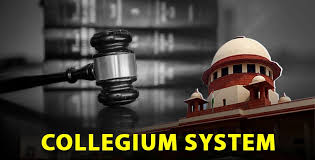Utah Administrative Code Topic - Public Safety
The Utah Administrative Code contains a significant body of rules under the topic of Public Safety. These regulations are primarily administered by the Utah Department of Public Safety (DPS), a large state agency with a broad mission to provide a safe and secure environment for all people in Utah.
Purpose and Scope of Utah Administrative Code - Public Safety:
The regulations under "Public Safety" in the Utah Administrative Code implement the various state statutes related to law enforcement, emergency management, driver services, criminal identification, forensic services, and fire safety. The overarching goals of these rules are to:
Protect Public Safety and Order: Establish and enforce laws and procedures to prevent crime, respond to emergencies, and maintain peace.
Regulate Driving and Vehicles: Govern driver licensing, vehicle registration, traffic laws, and driver behavior to ensure safe roadways.
Support Law Enforcement Agencies: Provide standards for peace officer training, criminal identification, and investigative services.
Prepare for and Respond to Emergencies: Develop plans and procedures for emergency management, disaster preparedness, and coordination of response efforts.
Prevent and Investigate Fires: Set fire safety standards, conduct investigations, and support fire services.
Administer Specialized Programs: Manage programs like concealed firearm permits, sex offender registries, and forensic analysis.
Divisions and Responsibilities of the Utah Department of Public Safety (DPS) (as reflected in the rules):
The Utah DPS is comprised of numerous divisions, and the administrative rules within the UAC reflect the specific regulatory authority of each:
Title R698 - Administration: This title likely covers general administrative rules for the entire Department of Public Safety, such as procurement, public records requests, and general operational procedures.
Title R704 - Emergency Management:
This title contains rules from the Division of Emergency Management (DEM). DEM is the lead state agency for prevention, mitigation, preparedness, response, and recovery actions related to emergencies and disasters. Rules here would cover state emergency plans, disaster assistance programs, and coordination with local and federal emergency services.
Title R708 - Driver License:
These rules are from the Driver License Division (DLD). This is a critical area, covering:
Driver licensing requirements (e.g., age, testing, types of licenses).
Driver improvement programs, including the point system for traffic violations (as seen in Rule R708-3), which outlines how points are assessed for violations and the thresholds for warnings, hearings, probation, and license suspension for drivers of different age groups.
Identification card issuance.
Medical requirements for drivers.
Procedures for hearings and appeals related to license actions.
Title R710 - Fire Marshal:
These rules are from the State Fire Marshal's Office (FMO). They focus on fire safety and prevention, including:
Fire code adoption and enforcement.
Licensing of fire protection contractors.
Fire sprinkler and alarm system requirements.
Investigation of fires.
Public education on fire safety.
Title R714 - Highway Patrol:
These rules relate to the Utah Highway Patrol (UHP), which is the state's primary traffic and law enforcement agency on state roads. Rules might cover traffic enforcement procedures, vehicle inspection, and specific operational guidelines for troopers.
Title R720 - Criminal Investigations and Technical Services, 911 Committee (Utah):
This likely includes rules from the Bureau of Criminal Identification (BCI) and potentially the State Bureau of Investigation (SBI), as well as the Statewide 911 Committee. Rules might cover:
Concealed firearm permits.
Criminal background checks and expungements.
Collection and dissemination of criminal justice information.
Standards for 911 emergency dispatch centers and funding for 911 services.
Title R722 - Criminal Investigations and Technical Services, Criminal Identification:
This title is likely a more specific continuation of the BCI's rules, focusing purely on criminal identification processes, fingerprinting, and maintaining criminal records.
Title R728 - Peace Officer Standards and Training (POST):
These rules come from the Peace Officer Standards and Training (POST) division. This is vital for maintaining professional standards in law enforcement:
Minimum qualifications for becoming a peace officer or dispatcher.
Training curriculum and certification requirements.
Continuing education for law enforcement professionals.
Decertification processes for officers who engage in misconduct.
Title R911 - Emergency Medical Services:
While EMS is a broader public safety component, this title specifically refers to rules from the Bureau of Emergency Medical Services (EMS) within DPS. These rules would cover:
Licensing and certification of EMS providers (EMTs, paramedics).
Ambulance service licensing and standards.
Emergency medical protocols and quality assurance.
In essence, the "Public Safety" topic in the Utah Administrative Code reflects the broad mandate of the Utah Department of Public Safety to safeguard the state's residents through a comprehensive system of law enforcement, emergency preparedness, and regulatory oversight across various critical public safety domains.


















0 comments